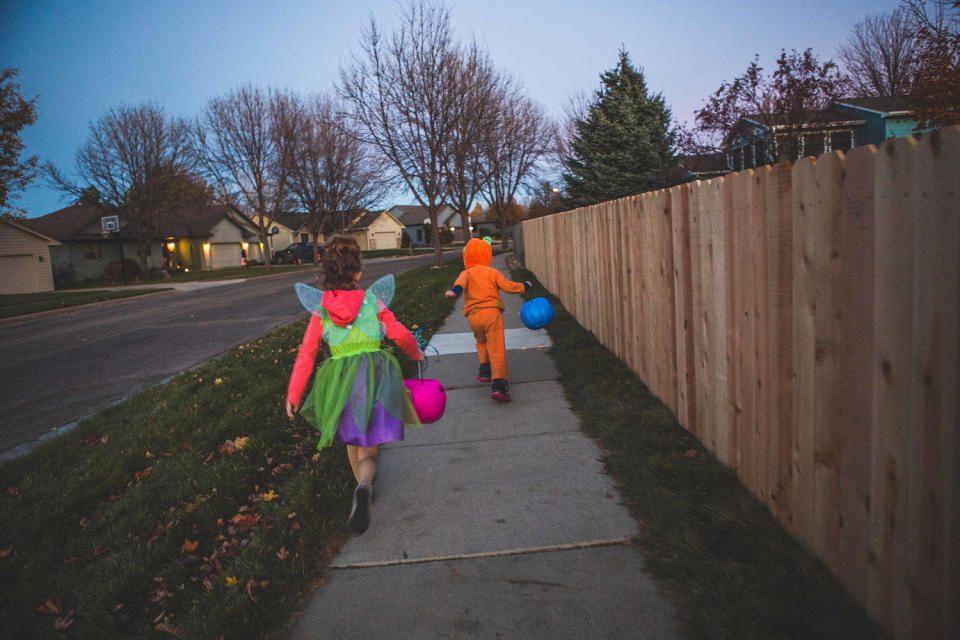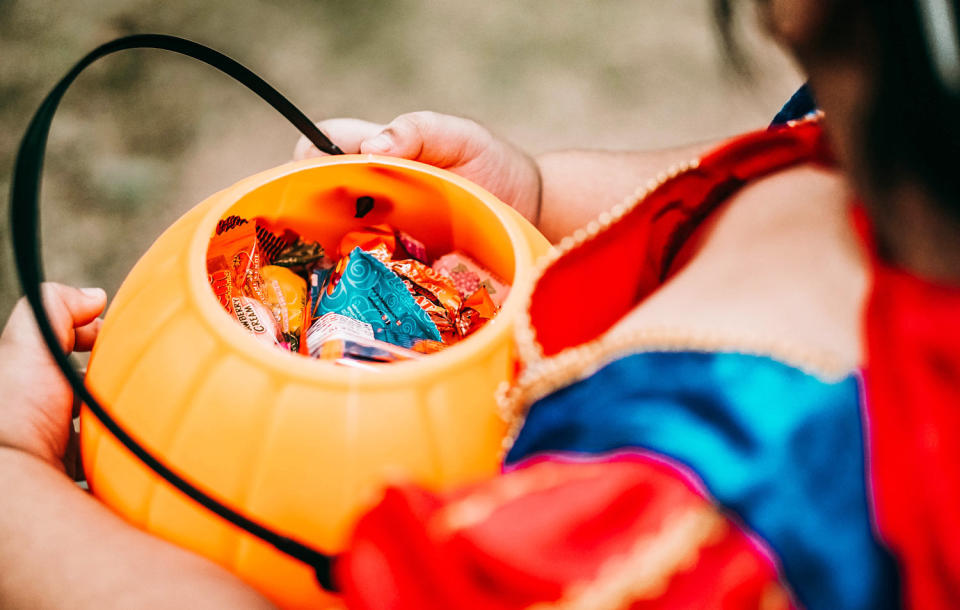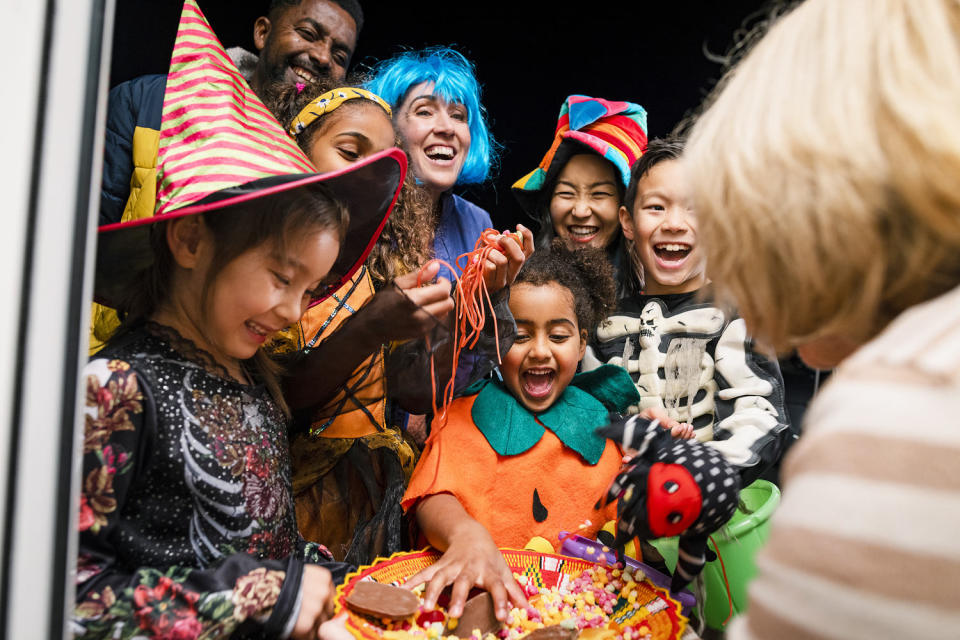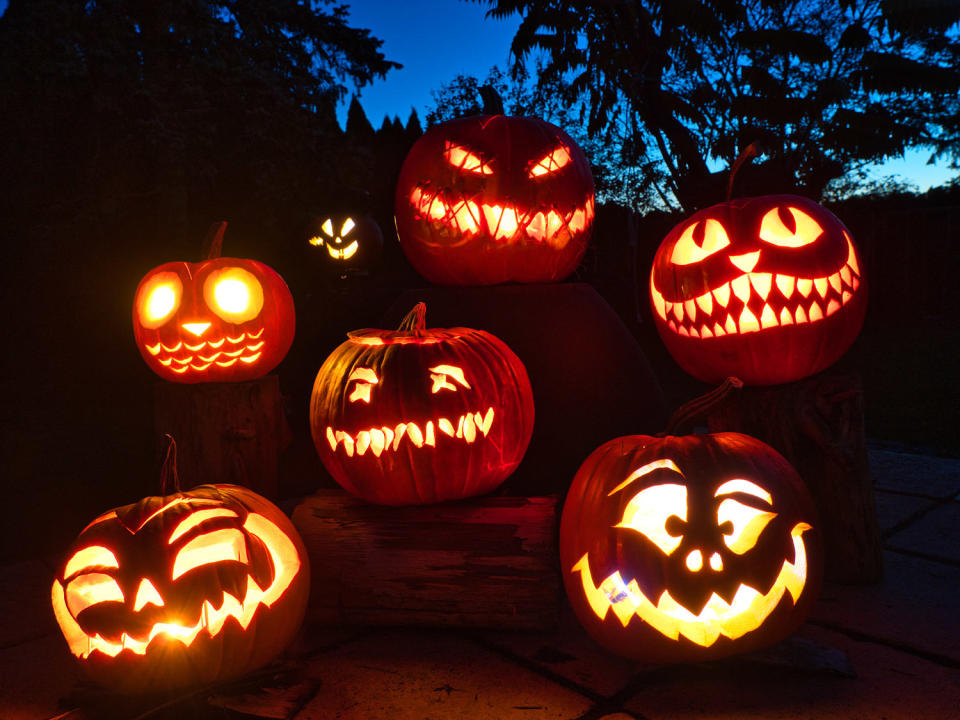The real history behind why we celebrate Halloween
- Oops!Something went wrong.Please try again later.
Halloween is the spookiest season of the year. But why do we celebrate it?
Good question. From flocking to see scary Halloween movies to dressing up and trick-or-treating, Americans can't seem to get enough of the holiday, spending upwards of $10 billion annually on everything from vintage decorations to pet costumes.
But beyond witches, ghosts and the rest of the fanfare, what's the history of Halloween and the meaning behind the annual celebration of all things dark and mysterious?
Surprisingly, there's a lot to know about Halloween and its many traditions like carving pumpkins into jack-o'-lanterns, trick-or-treating and wearing costumes, just to name a few.
There are plenty of other interesting facts about Halloween, too, like why black and orange are the holiday's signature colors, how Halloween got its name and what the Celtic festival Samhain has to do with it.
To learn more, TODAY spoke to two experts to find out about Halloween’s origins and just about everything else you might be wondering about when it comes to October 31.
Whether you use your newfound knowledge to test your friends' Halloween IQ or are just a history buff brushing up on your trivia skills, here's everything to know.
Why do we celebrate Halloween?

According to the Library of Congress, Halloween is celebrated (in part) because October 31 is the eve of All Saints Day, a day in which Christians remember and honor the dead.
However, many people believe the holiday originates from an old Druid festival called “Samhain. But according to at least one expert, history just might have that part wrong.
“Scholars, especially folklorists, for the last hundred years or so, have been associating it with ancient Celtic times, saying that there was some festival of the return of the dead on October 31,” says Henry Ansgar Kelly, research professor specializing in medieval and renaissance studies at UCLA. “But that turns out to be bogus.”
Kelly tells TODAY.com that Halloween began in the U.S. sometime around the 19th century when the Irish came to America, bringing their celebrations, including All Saints’ Day, with them.
“All Saints’ Day was a feast day on the Catholic calendar,” says Kelly. “November 1 was the day on which you celebrate all the people that have gone to heaven.”
The night before All Saints’ Day, people would hold vigils for the souls that hadn’t yet gone to heaven and were trapped in purgatory. In essence, it was night to pray for the dead — and thus Halloween was born.
Lisa Morton, author of “Trick or Treat: A History of Halloween,” views the history of Halloween timeline somewhat different, citing Christian missionaries who came to convert Irish Celtics and discovered them celebrating Samhain (pronounced SAH-win), a festival celebrating all about ghostly stories and moving into a darker time of year.
“If you look at the Celtic lore that they recorded, some of it is genuinely very scary,” Morton tells TODAY.com. “Even now, some of the stories that the Celts told each other at Samhain are really, really creepy.”
However, she doesn’t totally disagree with Kelly’s thinking. In fact, Morton says that the Halloween we celebrate today is likely a mix of both Samhain and All Saints Day.
And while Halloween has been celebrated in the U.S. since at least the late 1800s, the holiday really took off in the 1900s when retailers began mass producing cards, decorations and Halloween costumes.
How did Halloween get its name?
Defined by the Oxford English Dictionary as the eve of All Hallows’ or All Saints’ Day, the origin of the word "Halloween" is somewhat of an evolution.
According to Kelly, the name comes from a combination of the Scottish words "hallow," which loosely translates into "saint" or "holy person," and "een," which means "evening."
So, in essence, Halloween means "holy evening," which makes sense given its Christian ties.
Around 1773, the Scots began combining the two words and referring to Oct. 31 as "Hallow-e'en."
However, it was Scottish poet, Robert Burns, who put it all together in his 1786 poem, "Halloween," that really sealed the deal. And the rest, as they say, is history.
Why do we give out candy on Halloween?

Fun costume parties and trick-or-treating have become synonymous with Halloween, but according to Morton, that wasn't always the case.
For many years, she says Halloween was a night devoted to tricking or pulling pranks on unsuspecting people. By the 1930s, the pranks turned into full-blown vandalism, resulting in millions of dollars of damage to U.S. cities.
"They were smashing light fixtures and setting fires and tripping people on sidewalks, and, in 1933, vandals did so much damage it became known as 'Black Halloween,'" says Morton.
After Black Halloween, many cities contemplated banning the holiday, but instead decided to adopt a tradition popular in Canada. "The idea seems to have been that if you offer treats, the kids won't go around and play tricks," says Kelly.
The bottom line? Trick-or-treating began as a bribe. According to Kelly, the idea "picked up speed in the United States in the '30s and '40s" leading to today's Halloween ritual of ringing doorbells and shouting "Trick or treat" in hopes of scoring candy and other treats.
Why do we dress up on Halloween?

Halloween is an open invitation to dress up as a vampire, princess or ghost and play pretend. But where did wearing Halloween costumes come from?
While many people attribute wearing costumes to the ancient Celts, Morton begs to differ. "We have no evidence whatsoever of that. It is very modern."
The reason why we wear them remains somewhat of a mystery to both Morton and Kelly.
In the 1920s, magazines featured kids draped in sheets pretending to be ghosts, however, Morton says it's possible that costumes were worn well before then.
In fact, wearing costumes might actually be linked to Christmas and an old custom called "belsnickeling," where costumed children would perform plays for their neighbors in exchange for treats, not unlike modern-day Halloween.
Why do we carve pumpkins on Halloween?

Carving jack-o'-lanterns can be traced back to Ireland and the idea behind them stems from the old tale of "Stingy Jack."
"Jack was a legendary trickster," Morton tells TODAY.com. "There are hundreds of variants of the 'Jack' folktales all over the world."
According to the folklore, a drunkard and evil-doer named Jack cheated death three times in his life by tricking the devil out of taking his soul.
When Jack finally died, he was barred from heaven and refused entry into hell by the angry devil. Sentenced to walk through the dark worlds of good and bad, Jack carried a carved-out turnip with a glowing ember inside to light his way.
As far as carving pumpkins go, the Library of Congress suggests that the "Stingy Jack" story likely inspired the custom and that in an effort to ward off evil spirits, the Irish carved scary faces into turnips.
"When the Irish and Scottish came to America, they found these gorgeous native pumpkins and (they) were even better than turnips," says Morton. And much easier to carve.
However, according to Morton, the custom is relatively new.
"It's a bit of misconception to say that the Irish and Scottish were carving pumpkins 200 years ago," she explains. "They didn't have pumpkins 200 years ago. Those are strictly new world fruits that they found when they came here."
Yet another misconception is that Washington Irving's 1820 story of the Headless Horseman has anything to do with Halloween.
"While 'The Legend of Sleepy Hollow' absolutely influenced Halloween and pumpkins, it does not specifically mention Halloween," says Morton.
"When Disney turned it into a movie in 1949, they brought Halloween into the movie, but it wasn't part of the original story."
Why are black and orange Halloween colors?
Much like Christmas is associated with red and green, Halloween has its own signature color scheme: Black and orange.
Why those two colors?
According to Morton, it's likely their origin is inspired by the holiday itself, surmising that orange represents pumpkins and black pays homage to the night and other things commonly associated with Halloween like bats and black cats.
"Black and orange is recent," she says. "If you look at (catalogs) from the very early part of the 20th century, they say that brown and yellow are the colors of Halloween."
Over time, she says decorating companies latched onto the orange and black color theme, "and that seemed to be very popular."
This article was originally published on TODAY.com

